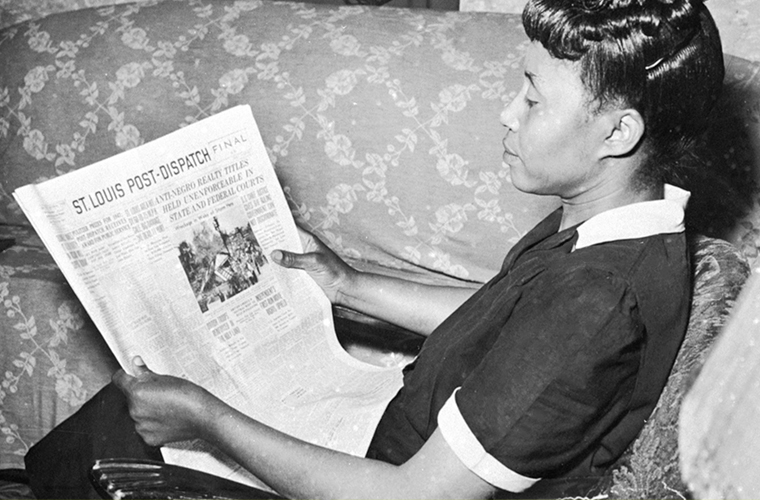Shelley v. Kramer was a landmark U.S. Supreme Court case that addressed the issue of racial discrimination in the sale of real estate. The case arose in St. Louis, Missouri, in 1945, when a black couple named J.D. and Ethel Shelley attempted to purchase a home in a predominantly white neighborhood. A restrictive covenant in the property’s deed stated that the property could not be sold or occupied by any non-white person. Despite this covenant, the Shelleys purchased the home with the help of a white friend, who held the title of the property on their behalf.
However, a group of white residents, organized as the “Ferguson-Florissant Improvement Association,” filed a lawsuit seeking to enforce the restrictive covenant and prevent the Shelleys from occupying the home. The case made its way to the U.S. Supreme Court, where it was argued on April 5, 1948.

In a unanimous decision issued on May 3, 1948, the Court held that the enforcement of restrictive covenants violated the Equal Protection Clause of the Fourteenth Amendment to the U.S. Constitution. The Court found that state courts could not enforce such covenants, as doing so would be state action that deprived African Americans of their constitutional rights.
Writing for the Court, Justice Fred M. Vinson stated that “a state court may not enforce a restrictive covenant which would violate the Equal Protection Clause of the Fourteenth Amendment, even though the covenant was voluntarily entered into by the parties.” The Court found that the covenant at issue in the case “operates as a private agreement which, if it had been brought to the attention of the State courts, they could not constitutionally have enforced.”
The Shelley v. Kramer decision was a significant victory for civil rights advocates, as it struck a blow against the practice of restrictive covenants, which were commonly used to segregate housing in the United States. The decision paved the way for subsequent court decisions and legislation aimed at ending discrimination in the sale and rental of housing. It also helped to set the stage for the landmark civil rights legislation of the 1960s, including the Civil Rights Act of 1964 and the Fair Housing Act of 1968.

